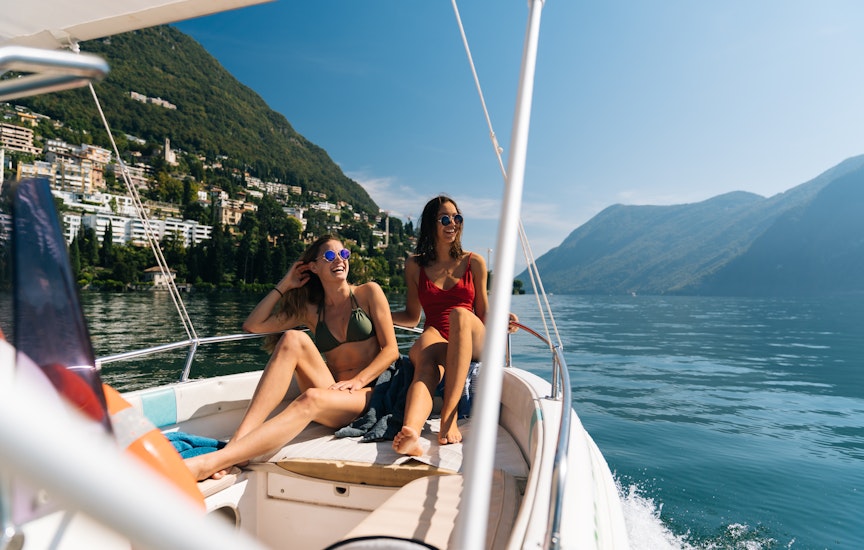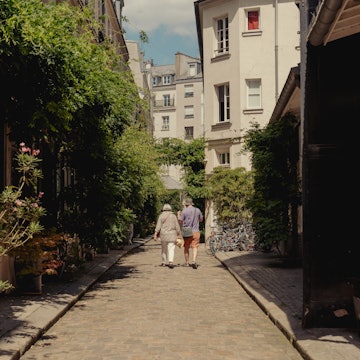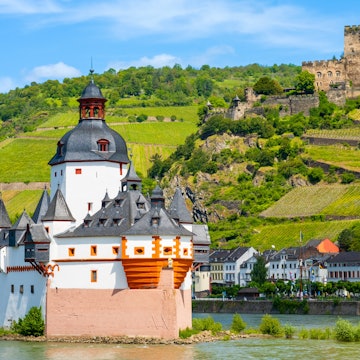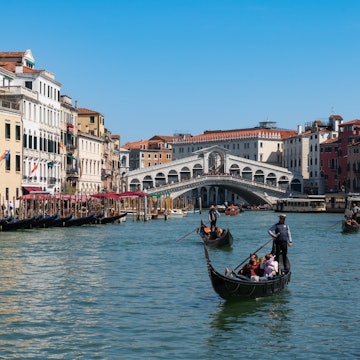
The 7 best day trips from Zürich for thermal spas, medieval cities and Alpine peaks

Dec 11, 2024 • 5 min read

Read on for sublime day trips on the doorstep of Zürich (like Rapperswil above), all accessible by public transport. Shutterstock
Stacked with museums, galleries, and Switzerland’s best gourmet scene, Zürich is a pleasure to visit.
Excellent public transport also makes the city a fantastic base for exploring the region, with day trip options including visits to charming old towns, soaks in thermal baths and a cruise to an island on Lake Zürich.
These are the best day trips from Zürich.
1. Explore the old town of Lucerne
Travel time: 1 hour
Is Lucerne Switzerland’s prettiest city? You be the judge after swooning at its cobalt lake and well-preserved medieval Altstadt (old town) with candy-colored houses and waterfront promenades. Don’t miss the creaky 14th-century Kapellbrücke, a covered bridge that zigzags across the Reuss River. Contemplate the Lion Monument, a 10m-long sculpture of a dying lion that Mark Twain called the “saddest and most moving piece of rock in the world”. Get a bird’s-eye view of it all by wandering along the top of the old city walls.
How to get to Lucerne from Zürich: Frequent trains depart from Zürich’s main station.

2. Wander around Winterthur’s atmospheric old town
Travel time: 25 minutes
Winterthur is home to the truly stupendous art collections amassed by Oskar Reinhart, including works by German Romantic painter Caspar David Friedrich. Here, you’ll also find one of Europe’s foremost photography museums, and the fantastic, hands-on Technorama devoted to science. The medieval turreted castle Schloss Kyburg tops a crag just south of Winterthur, while the pedestrian-only old town is lined with pastel-painted, terracotta-tiled boutiques, cafes and bars such as La Cyma.
How to get to Winterthur from Zürich: Frequent trains depart from Zürich’s main station.

3. Catch sunset atop Uetliberg, Zürich’s local peak
Travel time: 30 minutes
Uetliberg is the mountain on Zürich’s doorstep, ablaze with wildflowers in spring and daubed with russets and golds in fall. Head up this 869m (2850ft) peak to hike, jog or mountain bike on the trails that crisscross the woods, such as the Planetenweg, a 6km (3.7 mile) route across the mountain ridge that’s marked by 1:1 billion scale models of the planets. At the summit is Uetliberg Aussichtsturm, a steel lattice observation tower with fine views over the city, Lake Zürich and, in the far distance, the Alps. Sunset is prime-time viewing and a chance to enjoy a drink or meal at the Hotel Uto Kulm.
How to get to Uetliberg from Zürich: Train S10 runs to Uetliberg. From the terminus it's a 10-minute uphill walk to the viewpoint.

4. Feel the power of the Rheinfall, Europe’s largest waterfall
Travel time: 55 minutes
Formed by tectonic shifts during the last ice age 15,000 years ago, the Rheinfall is a real crash-bang spectacle. The river cascades 23m (75ft) across a width of 150m (492ft) creating billowing plumes of spray and raging white water in the basin below. In summer, ferries head to the tall rock in the middle of the falls, which you can climb and watch the water rush all around you. Otherwise, follow the trail that wends down from medieval Schloss Laufen to the Känzeli viewing platform. A visit to the falls can easily be combined with exploring the quaint medieval town of Schaffhausen, which is 4km (2.5 miles) away.
How to get to Rheinfall from Zürich: Take the S9 train to Neuhausen Rheinfall station.

5. Cycle around the tiny principality of Liechtenstein
Travel time: 1 hour 30 minutes
Only 25km (15.5 miles) long by 12km (7.5 miles) wide at its broadest point, Liechtenstein is the stuff of pure fairy tales: a mountain principality crowned by turreted castles such as that in Vaduz, its capital. From the tourist office here hire an e-bike to follow the 59km (37 mile) Drei Länder Tour (Three Countries Tour), which leads to the medieval town of Feldkirch in Austria. The route then heads on to Illspitz and down along the Rhine to Buchs in Switzerland – dominated by its 13th-century castle, Schloss Werdenberg – before heading back to Vaduz.
How to get to Liechtenstein from Zürich: Take the train to the border town of Sargans. From there, frequent buses head to Vaduz.

6. Sail to an island from lakeside Rapperswil
Travel time: 40 minutes
Known as the "city of roses" thanks to its profusion of the fragrant blooms, Rapperswil is a cultured little town on the eastern shore of Lake Zürich. Dominating the skyline is the late-12th-century castle Schloss Rapperswil. On the slopes beneath is one of the oldest vineyards on Lake Zürich and a herd of fallow deer. The town’s Kunst(zeug)haus is a forward-thinking art gallery, and Stadtmuseum Rapperswil-Jona is a history museum with a striking facade that combines modernist perforated bronze with a 14th-century stone tower. Stroll along the lakeside promenade then take a short ferry ride to the island of Ufenau, a nature reserve with medieval churches and a restaurant serving fresh battered fish, a local speciality.
How to get to Rapperswil from Zürich: The S5, S7 or S15 trains are the fastest way here. A cruise across Lake Zürich from Bürkliplatz takes two hours.
7. Relax in one of Baden’s mineral rich spas
Travel time: 15 minutes
The Romans were the first to harness the wellness powers of the 18 sulphur springs that bubble up around Baden. Roughly 800,000 liters (176,000 gallons) a day of Switzerland's most mineral-rich thermal water is pushed at temperatures of as much as 68°C (154°F). Most of Baden's springs have been channeled into spa hotels and complexes such as FORTYSEVEN and the Roman Bath at Hotel Blume. Along the Limmat River are a couple of small, open-air municipal baths that you can freely take a dip in. Baden’s Old Town is adorned by a fetching covered timber bridge (the Holzbrücke), cobbled lanes and an assortment of step-gabled houses. Also check out the Stiftung Langmatt, a gorgeous mansion housing a cornucopia of French impressionist art and surrounded by beautifully landscaped gardens.
How to get to Baden from Zürich: Take trains IR16 or IR36 from Zürich's main station.















